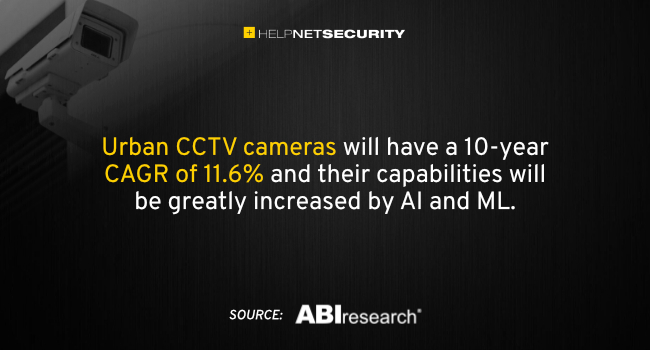Urban surveillance and public safety technologies are finding new use cases following the COVID-19 pandemic and increasing AI capabilities. COVID-19 has spurred the use of technologies, such as crowd monitoring, which are here to stay.
ABI Research forecasts a CAGR of 11.6 % with 1.4 billion Closed-Circuit Television (CCTV) surveillance cameras in urban areas worldwide in 2030.
“Currently, the main use of CCTV in public safety is to aid authorities to solve crimes retroactively. Now, with the advances in AI and its ability to monitor data and activity its ability to assist in real-time situations will be enhanced. Furthermore, CCTV cameras have been used to generate revenue, especially with road traffic fines.
“There has been a marked increase in the interest in video management tools and other smart city platforms to help cities and organizations make use of the data that is currently available to them,” explains Lindsey Vest, Smart Cities & Smart Spaces Research Analyst at ABI Research.
Cities currently have access to vast amounts of data from traffic cameras, police body cams, private CCTV, and many other sources that it can be difficult for them to get the value from this data. “We are seeing an increase in the real-time benefits from surveillance with the help of AI and its ability to, for example, highlight suspicious behavior, monitor crowd numbers, and identify unattended luggage,” Vest says.
Smart cities rely on their ability to gather video and other data which can be incredibly powerful for public safety and other essential applications. “Urban surveillance has been a key part of public safety technology for decades. Although it is not without its controversies, it remains a popular and growing sector,” Vest concludes.
Credit: Source link




